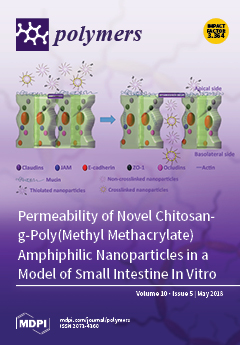Interest in the use of renewable raw materials in the preparation of materials has been growing uninterruptedly in recent decades. The aim of this strategy is to offer alternatives to the use of fossil fuel-based raw materials and to meet the demand for materials that are less detrimental to the environment after disposal. In this context, several studies have been carried out on the use of lignocellulosic biomass and its main components (cellulose, hemicelluloses, and lignin) as raw materials for polymeric materials. Lignocellulosic fibers have a high content of cellulose, but there has been a notable lack of investigations on application of the electrospinning technique for solutions prepared from raw lignocellulosic biomass, even though the presence of cellulose favors the alignment of the fiber chains during electrospinning. In this investigation, ultrathin (submicrometric) and nanoscale aligned fibers were successfully prepared via electrospinning (room temperature) of solutions prepared with different contents of lignocellulosic sisal fibers combined with recycled poly(ethylene terephthalate) (PET) using trifluoroacetic acid (TFA) as solvent. The “macro” fibers were deconstructed by the action of TFA, resulting in solutions containing their constituents, i.e., cellulose, hemicelluloses, and lignin, in addition to PET. The “macro” sisal fibers were reconstructed at the nanometer and submicrometric scale from these solutions. The SEM micrographs of the mats containing the components of sisal showed distinct fiber networks, likely due to differences in the solubility of these components in TFA and in their dielectric constants. The mechanical properties of the mats (dynamic mechanical analysis, DMA, and tensile properties) were evaluated with the samples positioned both in the direction (
dir) of and in opposition (
op) to the alignment of the nano and ultrathin fibers, which can be considered a novelty in the analysis of this type of material. DMA showed superior values of storage modulus (
E’ at 30 °C) for the mats characterized in the preferential direction of fiber alignment. For example, for mats obtained from solutions prepared from a 0.4 ratio of sisal fibers/PET, Sisal/PET
0.40dir presented a high
E’ value of 765 MPa compared to Sisal/PET
0.40op that presented an
E’ value of 88.4 MPa. The fiber alignment did not influence the
Tg values (from tan δ peak) of electrospun mats with the same compositions, as they presented similar values for this property. The tensile properties of the electrospun mats were significantly impacted by the alignment of the fibers: e.g., Sisal/PET
0.40dir presented a high tensile strength value of 15.72 MPa, and Sisal/PET
0.40op presented a value of approximately 2.5 MPa. An opposite trend was observed regarding the values of elongation at break for these materials. Other properties of the mats are also discussed; such as the index of fiber alignment, average porosity, and surface contact angle. To our knowledge, this is the first time that the influence of fiber alignment on the properties of electrospun mats based on untreated lignocellulosic biomass combined with a recycled polymer, such as PET, has been evaluated. The mats obtained in this study have potential for diversified applications, such as reinforcement for polymeric matrices in nanocomposites, membranes for filtration, and support for enzymes, wherein the fiber alignment, together with other evaluated properties, can impact their effectiveness in these applications.
Full article






